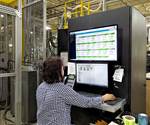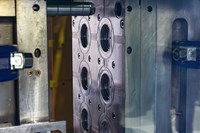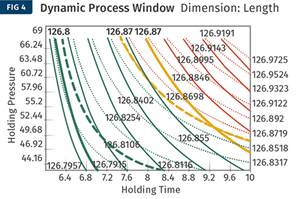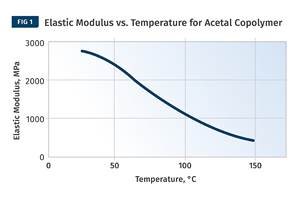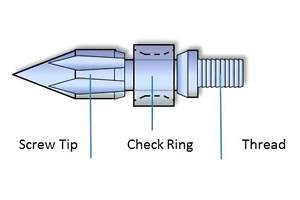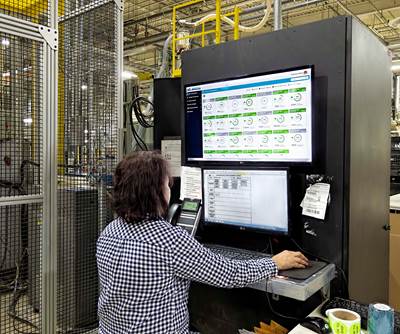Injection Molding: You Must Dry Hygroscopic Resins
The reason you dry certain plastics is to get the moisture out. But why does the moisture have to be taken out before processing?
The reason you dry certain plastics is to get the moisture out. But why does the moisture have to be taken out before processing? Even though some chemistry is involved, we are going to explain this with the analogy of tiny magnets. Everybody understands magnets.
First: Plastics get their strength from long polymer chains that are entangled. Short chains provide easier flow but sacrifice strength and other properties.
Second: Some plastics pull moisture out of the air. They are “hygroscopic.” Even if your material supplier dries the pellets and immediately packs them in plastic bags, the resin will still contain moisture when you get them. Why? Because polyethylene-based bags do not block the moisture in the air from getting to the pellets. Polyethylene by itself is not a true “barrier” resin; it is “porous” to moisture vapor (humidity).
You can prove this to yourself at home. Wrap an onion in the clear (polyethylene) plastic wrap found in your kitchen. Stick the wrapped onion in the refrigerator and watch, as time passes, how the onion shrivels and dries out. Moisture has escaped through the wrap. Some resins are so sensitive to moisture that they are packaged and shipped in vacuum-sealed barrier containers. Bottom line: The resin makers make it dry but it picks up moisture while it is in the packaging. So, it is “wet” when you open up the bag, gaylord, hopper truck, or railcar.
Third: Why are some resins hygroscopic in the first place? Polycarbonate, nylon, PBT, PET, ABS, acrylic, urethanes, and many other hygroscopic resins are long-chain polymers, as are polyethylene, polystyrene, etc. Hygroscopic resins contain carbon and hydrogen but, also have a “polar” segment of atoms that behave like a small magnet with north and south poles—i.e., positive and negative charges. If moisture, also a polar substance, is present, you get two mini-magnets that attract each other.
It is this magnetic attraction that pulls the moisture out of the air and holds it to the polymer. To get rid of it you have to dry these polymers at temperatures above the boiling point of water, 212 F. This will drive the two attracting magnets far enough apart that the magnetic attraction is minimized, and the circulating air from the dryer can extract the moisture.
This also explains why you can’t dry a resin properly by leaving it in the dryer overnight at a lower temperature. The magnetic attraction is still strong enough to hold the water to the polymer. This also explains why once you dry a polymer you generally have to process it within 30 minutes. Once exposed in the hopper to ambient air, it will again magnetically attract the humidity, needing then to be re-dried before processing.
Fourth: Some moderately hygroscopic resins like ABS and acrylic can be processed wet, but the moisture will turn to steam and cause splay. The moisture does not break up the backbone of these polymers. With other resins—like PET, PBT, PC, nylon, and TPU—exposure to moisture at processing temperature causes a chemical reaction (hydrolysis), which breaks long chains into shorter fragments, reducing strength and other properties. The “broken” polymer also flows easier, so if the polymer is not uniformly dried, your process must contend with variation in viscosity of the incoming resin at the feed throat. There may be no splay visible at low levels of moisture in the resin. The part will look fine and may even pass tests at room temperature, but will fail prematurely at low or high temperatures.
Again, why do you dry hygroscopic resins? To get the moisture out, but more importantly to ensure maximum polymer performance. If you make parts for medical or other high-liability applications, understand that if you process wet resin you leave your “fingerprint” on the parts. If they fail, tests can be done to see if the polymer chains are the proper length.
ABOUT THE AUTHOR
John Bozzelli is the founder of Injection Molding Solutions (Scientific Molding) in Midland, Mich., a provider of training and consulting services to injection molders, including LIMS, and other specialties. E-mail john@scientificmolding.com or visit scientificmolding.com.
Related Content
Optimizing Pack & Hold Times for Hot-Runner & Valve-Gated Molds
Using scientific procedures will help you put an end to all that time-consuming trial and error. Part 1 of 2.
Read MoreThe Effects of Time on Polymers
Last month we briefly discussed the influence of temperature on the mechanical properties of polymers and reviewed some of the structural considerations that govern these effects.
Read MoreFundamentals of Polyethylene – Part 6: PE Performance
Don’t assume you know everything there is to know about PE because it’s been around so long. Here is yet another example of how the performance of PE is influenced by molecular weight and density.
Read MoreGot Streaks or Black Specs? Here’s How to Find and Fix Them
Determining the source of streaking or contamination in your molded parts is a critical step in perfecting your purging procedures ultimately saving you time and money.
Read MoreRead Next
Lead the Conversation, Change the Conversation
Coverage of single-use plastics can be both misleading and demoralizing. Here are 10 tips for changing the perception of the plastics industry at your company and in your community.
Read MoreSee Recyclers Close the Loop on Trade Show Production Scrap at NPE2024
A collaboration between show organizer PLASTICS, recycler CPR and size reduction experts WEIMA and Conair recovered and recycled all production scrap at NPE2024.
Read MorePeople 4.0 – How to Get Buy-In from Your Staff for Industry 4.0 Systems
Implementing a production monitoring system as the foundation of a ‘smart factory’ is about integrating people with new technology as much as it is about integrating machines and computers. Here are tips from a company that has gone through the process.
Read More
.jpg;width=70;height=70;mode=crop)


